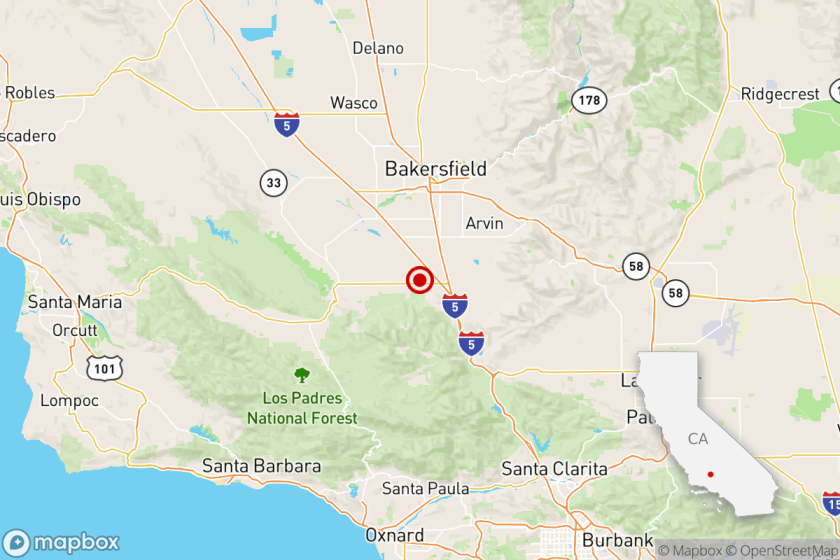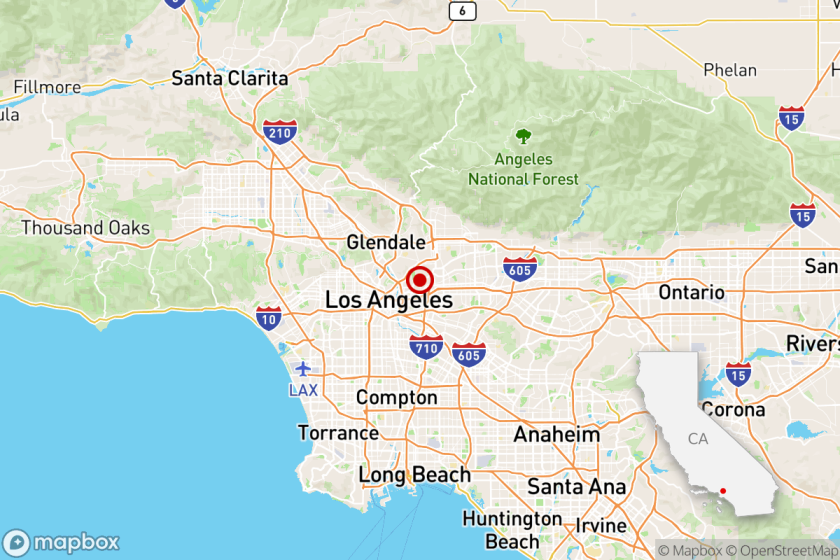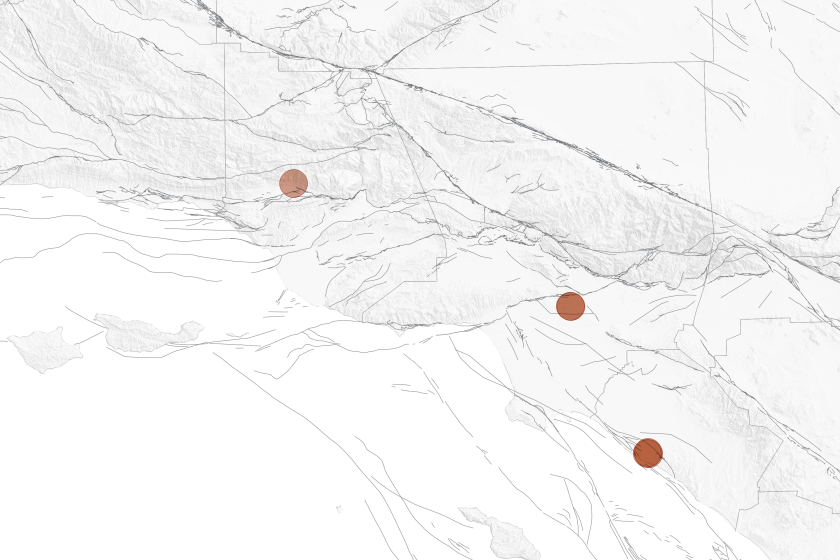Geology Reports Can Alert Buyers to the Warning Signs
When Michael Shanman and his fiancee recently found the house they are now purchasing in Tarzana, they didn’t give too much thought to a crack in the concrete slab floor of one bedroom. The crack wouldn’t even have been noticed if it wasn’t for the fact the carpets had all been stripped away.
However, Shanman’s lender and its appraiser wanted to know more about the floor crack. In fact, the lender told Shanman that he’d have to get a geology report before any loan could be approved. The geologist concluded that the crack was the result of some harmless ground settlement. All that’s needed to solve the problem is a bit of filler and Shanman expects to close escrow on the three-bedroom ranch home this month.
Not all problems created by movement of the earth are solved so easily, of course. During the rainstorms in late March, a group of hillside homes in the area of Laurie Drive and Laurie Place in Studio City were temporarily evacuated. A localized slide extended about 300 feet, encompassing six houses. And the same rains caused a small landslide and about 10 feet of earth movement on a hillside behind one home in Agoura Hills. Not surprisingly, all this earth movement will be keeping geologists and lawyers for the homeowners busy for some time to come.
Our property values and personal safety are all a bit vulnerable in Southern California thanks to earthquakes, landslides and even more common ground settling. These problems aren’t just limited to hillside residences, but all sorts of structures everywhere. Getting a geology report doesn’t guarantee you won’t have problems, but it can expose warning signs before they become too serious.
“On most properties, some ground movement is inevitable,” said Shanman’s geologist, Robert Hollingsworth, a vice president at Grover-Hollingsworth & Associates Inc. in Westlake Village. “Expecting no cracks is simply not reasonable,” he said. Besides, “a lot of cracks are inevitable and harmless.”
Some cracks, however, can be a sign that a house or the soil that it stands on are unstable, Hollingsworth said. Home buyers should look for signs of recent grading, foundation work, major cracks and doors or windows that are no longer level.
Vertical cracks that open at the bottom and close at the top suggest that the foundation is settling. Vertical cracks that open at the top and close at the bottom suggest heaving--meaning that the soil under the building is pushing up. Horizontal cracks suggest some sort of shearing force. Older cracks that keep recurring but that don’t get any worse each time are generally of less concern than new cracks that keep getting bigger.
Understanding cracks usually requires a trained eye, Hollingsworth said, so he encourages buyers to shell out the $500 to $700 that is charged for most prepurchase geological reports or appraisals. In the unlikely event that the report raises serious concerns, soil samples can cost an additional $2,000 to $6,000.
Hollingsworth estimates that about 50% of hillside buyers and about 10% of buyers in the flats of the Valley are now getting basic geology reports. These include a visual inspection, a check of public records and an overview of any local fault lines. Those who decide to hire a geologist, Hollingsworth advised, should retain the services of an engineering geologist licensed by the California Department of Consumer Affairs’ Board of Registration for Geologists and Geophysicists in Sacramento.
To be sure the geologist is offering sound advice about purchase of a property, it may be advisable to get a geologist other than the one being recommended by a real estate agent. And, check that the geologist is independent and not affiliated with a contracting company that would be interested in digging up your back yard.
“A great many homes are sold without geology reports,” said Emil DiMatteo, a geologist at Urban Geology Inc. in Sherman Oaks. “But those buyers come to us later with their problems.” While residential home sellers are required by state law to point out obvious defects and defects they know about, not all sellers know the defects in their own homes and not all sellers are as careful about disclosure laws as they ought to be, DiMatteo said.
“Some cracks are warning signs, others are not. You have to be able to interpret the cracks,” DiMatteo explained. “It’s a question of site-specific conditions.”
For example, just being told that a home is on a site where the builder actually cut into the soil or rock, versus a site that was created with filler dirt, is not enough. “You can’t say whether cut or fill is better,” he said. It’s important to know what kind of soil or rock was cut into. If the house is built on a filled site, the type of soil used as filler and how well it was compacted become crucial inquiries.
Homes built on bedrock are usually pretty stable, unless the rock separates, DiMatteo said. Clay tends to be more troublesome because it generally has lots of air and expands or contracts depending upon rainfall. Sand is usually considered quite stable because it is very dense and won’t cause a foundation to move.
“It’s not required but it’s advisable to get a geology report before closing escrow,” said home buyer Katterli Frauenfelder. She plans to close escrow this month on a two-bedroom stone home on half an acre near Universal City. Because the house is more than 100 years old and on a slope, Frauenfelder decided it was best to get a geology report.
“The report found the house was on very good bedrock and that there’s a low likelihood of sliding,” she said. “We also learned where all the nearby fissures and fault lines are.” The report, Frauenfelder said, helped her make a more educated decision about her pending purchase.
Getting a geology report can be important because with unstable soil, “Your property may be devalued to nothing,” said Keith Ehlert, a Van Nuys-based engineering geologist. “I’ve seen extensive soil problems throughout the Valley,” he said. “Most of the problems are caused by local soil problems.”
In many of the mountainous parts of the Valley, homes have been built into relatively youthful shale rocks. The shale contains clay that is very susceptible to slope failure when it gets wet. The slope failure may occur when it rains or it may take several months for water to seep deep into the ground and result in instability.
Ehlert likes to check out the neighborhood and take a good look at how a house is “performing.” “You can learn more from research and a visual check of the house than by doing soil samples,” he said. Distorted window and door frames are particularly telling. “When I go into a house with lots of wallpaper, I get suspicious,” he said. “I’d rather walk into a house that hasn’t been fixed up. Then I know what I’m dealing with.”
“Most of what I do is review properties for buyers,” Ehlert said. While he usually doesn’t follow up to find out whether they close escrow, Ehlert said the geology reports have many uses. “Some people will decide they don’t want the house and use the report as an excuse to get out of the deal,” he said. For others, he added: “it’s a bargaining chip to get the price lowered.”
More to Read
Inside the business of entertainment
The Wide Shot brings you news, analysis and insights on everything from streaming wars to production — and what it all means for the future.
You may occasionally receive promotional content from the Los Angeles Times.






